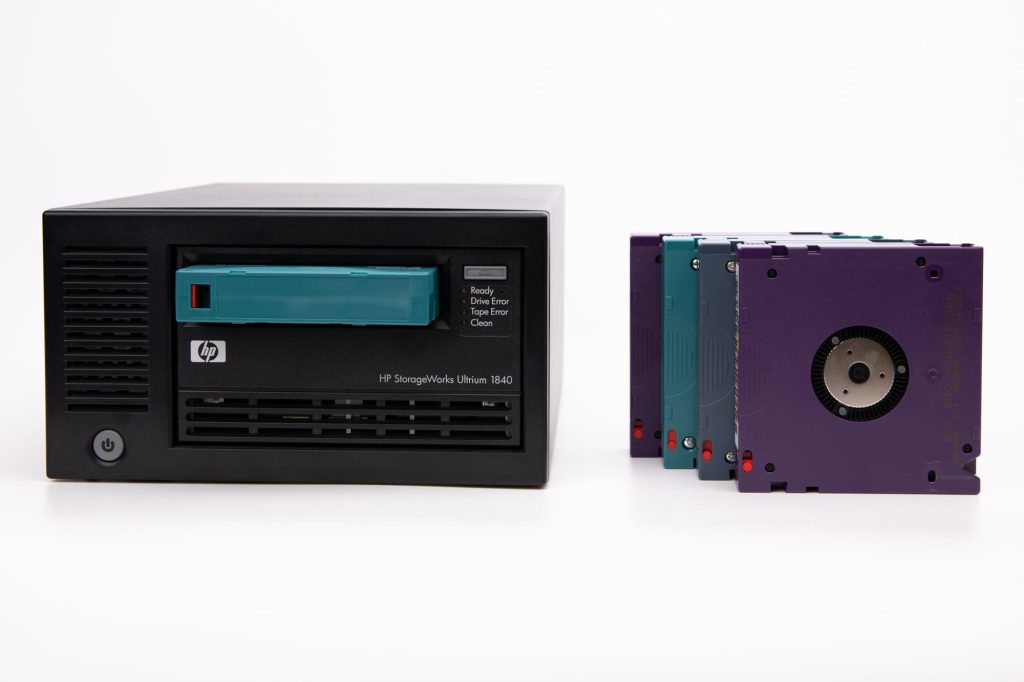Tape storage has long been a staple in the world of data storage, especially for organizations needing reliable and long-term data archiving solutions. While it offers several benefits, it also comes with certain drawbacks. In this article, we’ll explore both sides to help you understand whether tape storage is the right solution for your data management needs.
Advantages of Tape Storage
1. Cost-Effective for Long-Term Storage
One of the most significant advantages of tape storage is its low cost per gigabyte. Compared to hard disk drives (HDDs) and solid-state drives (SSDs), tape cartridges offer a more affordable option for storing large amounts of data over extended periods. This makes tape storage an attractive solution for organizations that require substantial storage capacity without a hefty price tag.
2. Durability and Longevity
Tape storage is known for its exceptional durability. Magnetic tapes are designed to last for decades when stored properly. Unlike HDDs and SSDs, which may degrade over time, tape cartridges can withstand environmental factors such as humidity and temperature fluctuations, making them ideal for long-term data preservation.
3. High Capacity
Modern tape drives can hold significant amounts of data. For instance, LTO (Linear Tape-Open) technology has evolved over the years, with the latest generations supporting capacities of up to 18 TB per cartridge. This high capacity makes tape storage suitable for organizations with large data sets that require efficient management.
4. Energy Efficiency
Tape storage is more energy-efficient compared to traditional disk storage systems. Since tape drives only consume power when reading or writing data, they significantly reduce energy costs, especially in large data centers. This efficiency can lead to substantial savings over time.
5. Data Security
Tape storage provides a level of physical security. As tapes can be stored off-site or in secure locations, they are less vulnerable to cyber threats compared to data stored on online servers. Additionally, tapes can be easily encrypted to protect sensitive information, adding another layer of security.
Disadvantages of Tape Storage
1. Slower Access Times
One of the most significant downsides of tape storage is its slower data retrieval speed. Unlike HDDs and SSDs, which allow for instant access to data, tape drives require sequential access, meaning that retrieving specific files can take much longer. This can be a drawback for organizations that require quick access to their data.
2. Physical Handling and Maintenance
Tape storage involves physical media, which means that handling and storing tapes requires additional management. Tapes can be prone to damage if not stored correctly or handled with care, leading to potential data loss. Moreover, tape drives require periodic maintenance to ensure optimal performance.
3. Obsolescence Risk
As technology evolves, there is a risk that tape formats may become obsolete. This can lead to compatibility issues when trying to access older tapes. Organizations must plan for the future by ensuring they have the necessary hardware to read and restore data from older tape formats.
4. Limited Scalability
While tape storage is excellent for long-term archiving, it may not be the best choice for organizations looking for scalable storage solutions. Adding capacity can require purchasing additional tape drives and cartridges, which may not be as straightforward as expanding disk storage.
5. Backup Complexity
Managing backups with tape storage can be more complex compared to disk-based solutions. Organizations must implement strict backup protocols, including scheduling and tracking tape usage, which can add administrative overhead.
Conclusion
Tape storage offers several advantages, particularly for organizations focused on cost-effective, long-term data archiving. Its durability, high capacity, and energy efficiency make it a compelling choice for many. However, it is essential to consider the disadvantages, such as slower access times and potential obsolescence risks.
Ultimately, the decision to use tape storage should be based on your organization’s specific needs and data management strategy. Evaluating the trade-offs will help you determine if tape storage aligns with your goals for data preservation and retrieval.


